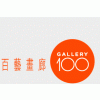 |
Gallery 100
1F, No.13, Lane. 252, Sec.1,
Dunhua S. Rd,
Taipei 10688, Taiwan map *
tel: +886 2 2731 0876 / +886 2 2731 0786
fax: +886 2 2731 0862
send email
website
|

Enlarge
|
| Once upon a Time
|
|
| by Gallery 100
Location: Gallery 100
Artist(s): HE Chongyue, WANG Qingsong, CHEN Jiagang
Date: 25 Feb - 25 Mar 2012
The artistic form of photography captures both what can be seen and what goes unnoticed in one fleeting moment in time. In any discussion on visual objects, photography is of unparalleled importance and has played an important role in the discussion of social and political issues throughout the development of contemporary Chinese art. The exhibition “Once upon a Time – A Group Exhibition of Contemporary Photography”, invites middle-generation Chinese photographic artists Wang Ching-sung(王慶松), He Chungyue(何崇岳), and Chen Jiagang(陳家剛) to discuss changing landscapes and cultural phenomenon in China, in their own inimical styles.
Wang Qingsong became a renowned Avant-garde artist in China in the 1980s. His photographic scenes are imbued with the spirit of mundane world and even rough and vulgar living conditions, reflecting a narrative logic unique to the development of contemporary Chinese art and its reaction to western aesthetic values. Wang's pictures are replete with semiotic meanings that represent calmness and humor, combined to create the dramatic tension of a story and showcase distinctive observations of current events. In the artist's two most recent works “Goddess” and “Temple”, the illogical and bizarre scenes depicted are an extension of the artist’s unique visual aesthetic and show the attempt that Wang subtly turned his earlier cynical narrative in staging arrangement to a more contemporary “deadpan” photographic style on the plane. His works also correspond to a change in social consciousness and the political-economic situation in China in the post-911 world. Wang’s pieces have been collected by art museums around the world and he is frequently invited to take part in international exhibitions. In 2011, he participated in the Arles Photography Festival in France; in 2010, his seminal work “Follow Me” was displayed as part of a touring exhibition in museums across Spain; and in 2006 he attended the ICP Triennial in the United States.
He Chungyue adopts a more social documentary type approach and uses his work to revisit the dramatic changes that have taken place in Greater China. He takes the memories of this era and locks them into each of his pieces, transforming them into silent testaments to history. One of works he shows at the current exhibition is titled “Former Residence of Liu Wencai”. Liu was targeted during the Cultural Revolution and is characterized as a villain in “Rent Collection Courtyard”, a well-known drama in the 60’s. He was a member of the gentry in rural Sichuan and was labeled as one of the “Black Five” during the 1960s, from which time he has been an archetypal reactionary local despot who exploited the peasantry. The red flag on the wall is a testament to a time in the past when politics dominated everything, though the mottled stains speak to an infinite melancholy. He’s photographic works have consistently been one of the best ways for people in the West to observe the changes taking place in Chinese society. One of his most important series of works “A Billion to One” was displayed at the Valencia Contemporary Art Center in Spain in 2008; in 2007, he took part in the exhibition “Toward the Post-century” curated by renowned Chinese curator Gao Minglu.
Chen Chia-kang is particularly adept at crafting pictures infused with a sense of eastern charm. The female roles in his works tend to have a semiotic meaning that transcends gender, symbolizing the values and archetypes of traditional eastern society. As part of the photographic process the artist spent a great deal of time visiting out of the way places known by few and long since left to history. Through his camera lens Chen breathes new life into long forgotten memories, connecting them to the ongoing modern urbanization. When contrasted with this primitive environmental narrative, the characters portrayed convey a certain sentimentality and nostalgia for the past. This combination ensures that Chen Jiagang’s photographs are infused with an aesthetic experience based on conflict and a sense of surrealist impression in his pictures. His recent work “Sample Room”, present a sumptuous scene that depicts the absurd values and lifestyle faced by changing Chinese society where socialism is pre-eminent. Chen's works became part of the collections of MoMA in the United States and of the Valencia Contemporary Art Center in Spain. |
|
|
|
|
